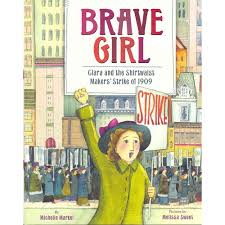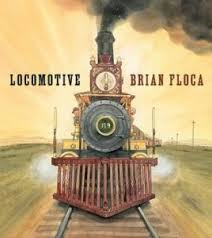 History programs are appropriate for Founders’ Day, your library’s anniversary, or other related holiday (or anytime!). Just like museums that create living history programs, libraries can have fun history programs with great games and arts and crafts. If you need some ideas of “old timey” games, check out the book The Art of Stone Skipping and Other Fun Old-Time Games: Stoopball, Jacks, String Games, Coin Flipping, Line Baseball, Jump Rope, and More by J.J. Ferrer, Imagine! Publishing, 2012. It contains the rules for many old fashioned games, from jacks and marbles to ball games, card games, and much more.
History programs are appropriate for Founders’ Day, your library’s anniversary, or other related holiday (or anytime!). Just like museums that create living history programs, libraries can have fun history programs with great games and arts and crafts. If you need some ideas of “old timey” games, check out the book The Art of Stone Skipping and Other Fun Old-Time Games: Stoopball, Jacks, String Games, Coin Flipping, Line Baseball, Jump Rope, and More by J.J. Ferrer, Imagine! Publishing, 2012. It contains the rules for many old fashioned games, from jacks and marbles to ball games, card games, and much more.
Be sure to have lots of great, photo-filled history books, picture book biographies, and historical fiction on display and listed on bookmarks. Begin the program with one or two readalouds of picture books with historical settings, such as those listed with each activity below. Then, allow the audience to choose from a variety of stations, set up with games or crafts run by high school volunteers.
Offer “old fashioned” refreshments such as root beer floats, or sliced watermelon. If you have a relatively small crowd, you could even have one station where the kids make caramel apples (monitored by adult volunteers – I did this using a crockpot to heat the caramel).
If you hold part of the program outside, you can set up areas for free play of old fashioned games. Set up an area with a marbles game, another for jacks, another for jump rope, all monitored by volunteers.
In a quiet area for parents who want to rest a bit with their kids, have some silent film comedies showing on a television. Or, read Mo Willems’ book That Is Not a Good Idea! Balzer+Bray, 2013, which has a silent movie theme.
Here are some ideas for the other games and craft stations:
Games
 Button, Button, Who’s Got the Button: This simple guessing game is easy for larger groups. Pair it with the book Brave Girl: Clara and the Shirtwaist Makers’ Strike of 1909 by Michelle Markel, Balzer+Bray, 2013. The game instructions can be found here: www.fungameskidsplay.com/buttonbuttongame.htm .
Button, Button, Who’s Got the Button: This simple guessing game is easy for larger groups. Pair it with the book Brave Girl: Clara and the Shirtwaist Makers’ Strike of 1909 by Michelle Markel, Balzer+Bray, 2013. The game instructions can be found here: www.fungameskidsplay.com/buttonbuttongame.htm .
Red Light, Green Light: This easy outdoor game can reinforce safety as well as fun! Here’s how: www.fungameskidsplay.com/redlightgreenlightgame.htm . Read about the inventor of the Stop Light, Garrett Morgan, in What Color Is My World? by Kareem Abdul-Jabbar, Candlewick, 2012, to go along with the game.
Presidents’ Game: Use technology to learn about the past! Play this fun online game about the presidents: http://teacher.scholastic.com/scholasticnews/games_quizzes/president_roles/ . Or, have a Presidential Trivia contest. Find questions in Julia Moberg’s Presidential Pets, Charlesbridge, 2012, or Joe Rhatigan’s White House Kids, Imagine, 2012.
 Locomotive Game: Make a large cardboard Locomotive target, with the window cut out. Have players toss three beanbags at the window – prizes awarded according to how man beanbags get into the window. Pair with Brian Floca’s new book Locomotive, Atheneum, 2013.
Locomotive Game: Make a large cardboard Locomotive target, with the window cut out. Have players toss three beanbags at the window – prizes awarded according to how man beanbags get into the window. Pair with Brian Floca’s new book Locomotive, Atheneum, 2013.
Native American Stick Game: This simple game is played with popsicle sticks: www.ndstudies.org/resources/activites/aind/stick-game.html . To introduce the game, try When I Was Eight by Chrisy Jordan-Fenton, Annick Press, 2013.
Crafts
 Tree planting: Have attendees plant small trees in containers they can decorate with craft paint. This craft celebrates the book The Tree Lady: the True Story of How One Tree-Loving Woman Changed a City Forever by H. Joseph Hopkins, Beach Lane, 2013. Here are ideas for the best types of trees to plant in pots: www.gardeningknowhow.com/ornamental/trees/tgen/growing-trees-in-containers.htm.
Tree planting: Have attendees plant small trees in containers they can decorate with craft paint. This craft celebrates the book The Tree Lady: the True Story of How One Tree-Loving Woman Changed a City Forever by H. Joseph Hopkins, Beach Lane, 2013. Here are ideas for the best types of trees to plant in pots: www.gardeningknowhow.com/ornamental/trees/tgen/growing-trees-in-containers.htm.
Clay Play: Etched in Clay: the Life of Dave, Enslaved Potter & Poet by Andrea Cheng, Lee & Low, 2013, or Dave the Potter: Artist, Poet, Slave by Laban Carrick Hill, Little Brown, 2010, are two books on the distinguished sculptor. Have children make any type of clay figures they would like, including simple coil pots or other items.
Kite Making: Kites have been a staple of child’s play for generations. Make simple kites and share the story about kites used in China during the Cultural Revolution in Ji-Li Jiang’s Red Kite, Blue Kite, Hyperion, 2013. Check your kite books for instructions, or try: http://kids.nationalgeographic.com/kids/activities/crafts/kite-craft/ .
Blessing Cup: To celebrate Patricia Polacco’s book The Blessing Cup, Simon & Schuster, 2013, have children decorate cups for a grandparent or favorite older relative. Find old coffee mugs or cups at the thrift store, and decorate with ceramic paint.
Cave Drawings: Put up several large pieces of butcher paper on the outside walls. Let children create their own cave drawings using washable markers. Keep these for bulletin board background paper for displays on art history, prehistoric history, animal books, etc. Pair with Mordicai Gerstein’s The First Drawing, Little Brown, 2013.
Thank you (once again, Penny). This is very good stuff–Big Grandma